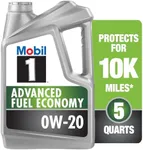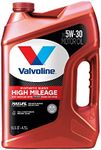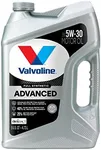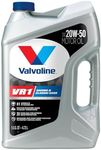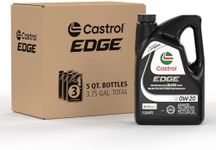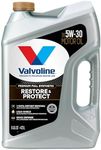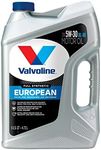Buying Guide for the Best Motor Oils
Choosing the right motor oil for your vehicle is crucial for maintaining engine performance and longevity. Motor oil lubricates the engine's moving parts, reduces friction, and helps keep the engine clean by preventing the buildup of sludge and deposits. When selecting motor oil, it's important to consider several key specifications to ensure you get the best fit for your vehicle and driving conditions.ViscosityViscosity refers to the thickness of the oil and its ability to flow at different temperatures. It's important because it affects how well the oil can protect your engine under various operating conditions. Viscosity is usually indicated by a number followed by 'W' (for winter) and another number (e.g., 5W-30). Lower numbers mean the oil is thinner and flows more easily at low temperatures, which is good for cold starts. Higher numbers indicate thicker oil that provides better protection at high temperatures. For most drivers, a multi-grade oil like 5W-30 or 10W-40 is suitable, but always check your vehicle's manual for the recommended viscosity.
Synthetic vs. ConventionalMotor oils can be either synthetic or conventional. Synthetic oils are chemically engineered to provide superior performance and protection, especially in extreme temperatures and high-stress conditions. They tend to last longer and offer better engine protection but are more expensive. Conventional oils are derived from crude oil and are less expensive but may not perform as well under extreme conditions. If you drive in very hot or cold climates, tow heavy loads, or have a high-performance engine, synthetic oil might be the better choice. For regular driving conditions, conventional oil is usually sufficient.
AdditivesAdditives are chemicals added to motor oil to enhance its performance. They can include detergents to keep the engine clean, anti-wear agents to protect engine parts, and antioxidants to prevent oil breakdown. The presence of these additives is important because they help the oil perform better and last longer. When choosing motor oil, look for oils that contain a good balance of additives suited to your driving conditions. For example, if you drive in stop-and-go traffic, an oil with strong anti-wear properties might be beneficial.
API and ACEA RatingsThe American Petroleum Institute (API) and the European Automobile Manufacturers' Association (ACEA) provide ratings that indicate the quality and performance of motor oils. API ratings are usually denoted by two letters, such as 'SN' or 'SP', with the second letter indicating the oil's performance level (higher letters mean better performance). ACEA ratings are more detailed and include categories for different types of engines and driving conditions. Checking these ratings can help you ensure that the oil meets the necessary standards for your vehicle. Always refer to your vehicle's manual to see the recommended API or ACEA rating.
Oil Change IntervalThe oil change interval is the recommended frequency at which you should change your motor oil. This is important because over time, oil degrades and loses its effectiveness in protecting your engine. The interval can vary depending on the type of oil you use and your driving conditions. Synthetic oils generally have longer intervals between changes compared to conventional oils. Your vehicle's manual will provide guidance on the recommended oil change interval, but it's also a good idea to consider your driving habits. For example, if you frequently drive in harsh conditions or have an older engine, you might need to change your oil more frequently.
